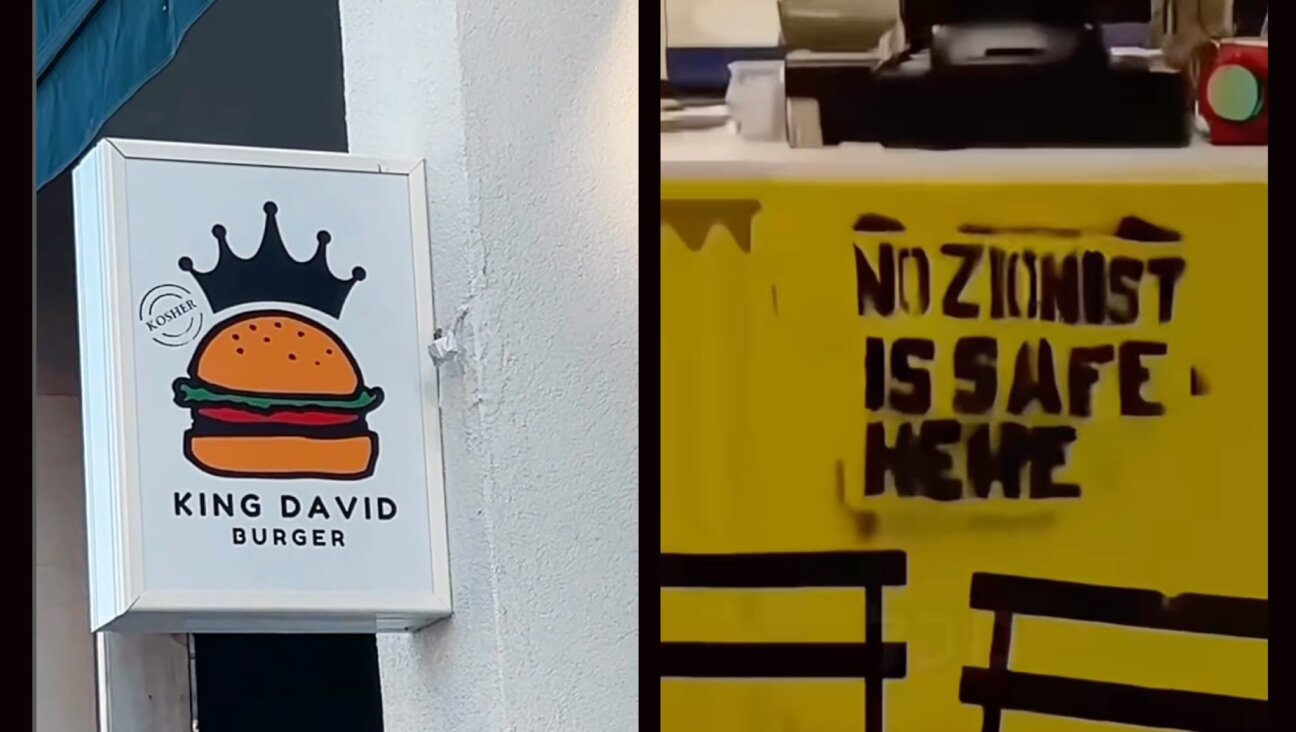The Women Who Warned Their Families

Graphic by Angelie Zaslavsky
Getty Images
At one point in the documentary “No Place on Earth,” Saul Stermer, now 93, who, with his family, spent 511 days hiding in two Ukrainian caves and escaped the Holocaust, smiles and says, “What a mother!” No wonder. His mother, Esther Stermer, who was 75 years old in 1942 when the Nazis came to her Ukrainian village, saved her family.
During my training to be an oral historian for Steven Spielberg’s survivors of the Shoah visual history project, interviewing Holocaust survivors, I learned that it was often the woman of the family, the mother, the wife, who recognized the Nazi peril before the husband did. Too often the men dismissed signs of impending disaster, shrugged them off with the confidence that they had lived in these homes for years like their parents before them, that they had successful businesses, lovely homes, good neighbors, that this unpleasantness would pass. But somehow the mothers knew. And the families who listened to their women and left Germany or Austria or Czechoslovakia or other countries invaded by the Nazis managed to survive.
Esther was one of these women who knew danger and who dealt with it. She warned the men in her family not to register to work for the Nazis because she realized that those Jewish men who did register were never seen again. She also told her family not to obey orders to move to the ghetto, but to hide instead.
In the documentary, Sima, Esther’s granddaughter, relates the story of the time the Gestapo found the little band of Jews hiding in a local tourist cave and Esther stood up to the Nazis, speaking to them in German (one of the four languages she spoke fluently) and said, “So you have found us. So you are afraid that the Führer is going to lose the war when we live here?… Look at us — we’re women and children. All we want is to survive the war.” The storm trooper said, “People don’t live in any cave. We will take you to a camp.”
“Then,” Sima continues, “my grandmother said, ‘I know already what type of camps you have for us.’” The Gestapo led the little group through the cave, but in the dark, one by one, the family slipped away and hid before managing to exit the cave and hide above ground before finding another cave, one that had never been discovered before, where they remained for almost a year to survive the war.
There is more to tell about this remarkable woman — how she kept track of the dates even though for 344 days she never left the pitch darkness underground in the second cave. In the documentary, Saul, her son, remembers, “She would say, ‘Boys, it’s a full moon.’ We would say, ‘Mom, we’d been here eight months already, how do you know about the full moon today?’ and she said, ‘Don’t joke. It’s a full moon.’ It always bothered me. How could she know? But she knew it.” And on those nights the men knew it would be dangerous to go out foraging for food.
How she insisted that her family observe the Jewish holidays, even to the extent of fasting on Yom Kippur, which today the sons find funny in view of the fact that they never had enough food during their long ordeal. During the eight days of Passover she felt uncomfortable eating hametz (at that point the only food they could get).
How she carried her teenage son for miles after he had a nervous breakdown, while hiding them both from the Nazis as well as the Ukrainian police. Saul’s eyes were glazed, his teeth were clenched, he was drooling at the mouth, and he could not speak. During their escape, as Saul was trembling all over, Esther took off her jacket and wrapped him in it, while she shivered from the rain and the snow on that bitterly cold night. Desperate to find shelter, she knocked on seven doors until she found a sympathetic woman who took them in until she could find a doctor to treat her son. That son is alive today because of his brave and resourceful mother.
In 1960, safe in Canada, Esther wrote “We Fight to Survive,” a memoir for her family, published in Canada in 1975, and then in 2004 published in the United States. In this book she wrote, “Our family in particular would not let the Germans have their way easily. We had vigor, ingenuity and determination to survive. Above all our family would stand together. When one of us was in danger, the others would not cower to escape. They proved their personal strength and character time and again.”
Esther lived until a few days short of 96 and until her death keenly remembered all that her family had gone through from 1939 on. In addition to the well reviewed film directed by Janet Tobias and now available from NetFlicks and on DVD, the family’s story has also been told in a 2007 children’s book, “The Secret of Priest’s Grotto: A Holocaust Survival Story” by Peter Lane Taylor and Christos Nicola. Nicola was the caver who first found artifacts left by the 38 people who hid in the cave, and then, with the help of the Internet, tracked down the survivors.
Esther Stermer is indeed a mother worthy of celebrating.






















